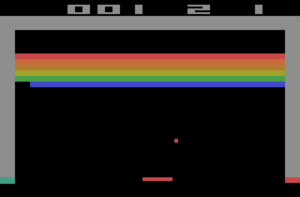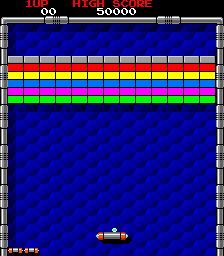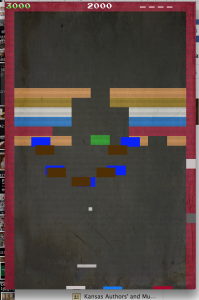
It’s been a decade since I released a game of my own. I’ve done contract gigs since my last game (Flip Panic! for Windows), and my most recent small contract game development project was less than a year ago. It’s not the same though: contract game development isn’t nearly as interesting for me as doing my own. Someone else calls the shots, and I just build to suit (and, heck, this last one was just a client-side multi-player setup that I’m not sure ever actually got used.)
But with my own games, it’s a lot of fun. Don’t get me wrong, it’s work, but it’s more like writing books than fulfilling a design objective. The world is mine to hack on, to turn into whatever I want.
Part of my goals behind doing my own games was a revitalization of The Save Ferris Project. I couldn’t get enough traction with the project, so I had set down a goal: I’d release at least two games, then come back to trying to get The Save Ferris Project fully funded. It’s easy to say “We’re going to make games!”, but it’s harder to get people to believe it unless you’re actively doing it. Yes, I have a history in game development, but it’s a decade old, and the games aren’t available for download anymore. There’s just no real “proof” anymore.
My secondary goal was to try out a “novice” development environment, and use it as a learning environment for the first Save Ferris target. I wanted something partially visual, quick results for low-effort games, but still an environment that allowed for real programming. OK, I didn’t quite nail all the things I wanted from it, but I got close. I’m using Stencyl 3.0 beta at the moment.
I’ve got a separate article over at MidnightRyder.com planned for my experience with Stencyl as a development environment, so I won’t get into all of that.
I had been hacking around with some prototype games in Stencyl for a while, and I found a gap in my schedule: I’ve got a huge project coming up, but only some small projects currently going on. It was prime-time to sit down and do some game development.
In 24 hours I had a working game, going from scratch. I’ll call that a success. Part of it was picking a realistic target: I was going to re-define the Breakout / Brick Breaker genre.

I find Breakout to be one of the most boring games ever made. I had it for the Atari 2600, and well… I never really enjoyed it that much. However, fastforward to Arkanoid, and there was a variation I really liked! And, of course, after Arkanoid came a long period where everyone re-created the same game, over and over. Sure, they had different graphics and levels, but they were the same basic gameplay: paddle, ball, bricks, and powerups.
So I decided to change it up. First, I went back to the roots: I eliminated powerups. Â I re-created the original Breakout gameplay concepts in Stencyl, though I gave the player better control over the ball, using something more similar to Arkanoid’s gameplay (where you hit the ball on the paddle determines where the ball is going to bounce. Â Almost all Brick Breaker style games do that now, but if you find an old copy of Breakout and try it, you’ll discover the original bounce methodology sucked.)
Then, I removed most of the “rules” of Breakout and Arkanoid. Â Sure, you hit the ball with the paddle to smash into the bricks. Â That still applied. Â In fact, level 1 is pretty much that – though there’s a hint that the game is different. Â If you’re good, you can beat the level by hitting the ball once, and the trajectory will handle the rest.
The second level shows you there’s gonna be some weirdness with the game: Â the paddle is at the top, the playfield bricks are at the bottom. Â Not exactly a huge thing, but I wanted to ease the player into the idea the game wasn’t what they’ve ever experienced before.
I’m not going to give a blow-by-blow of all the levels – that would be boring. Â I’ll just sum it up: Â each level provides a new unique challenge for the player. Â It’s not just about the layout of the bricks. Â A lot of the levels involve gravity based items, multiple paddles, multiple out zones (the bottom of the screen on most brick breaker style games), hidden levels, etc. Â There’s A LOT packed in the game. Â OH, and four difficulty levels, and a rather “mean” system of unlocking levels (to unlock a level, you actually have to HIT the lock with the ball when you’re playing a level. Â It’s quite possible to end up finishing a level without unlocking it!)
And, just for fun, I created two screen overlays. Â By default, you end up playing on a 1976 arcade screen that’s been burned out, smoke stained, and faded. Â A second screen overlay provides old-school scanlines. Â Those overlays can be turned off, so you can experience the big, chunky 1976-style graphics in all their glory 😉 Â Finally, I threw in all the iOS extras for Gamecenter, including two high-score boards.

So, how long did it take to re-think a genre, and develop the entire game? Â Everything was done in less than two weeks, and that includes other projects I had to ship (there were a couple late nights during the final sprint.)
Not bad. Â Not bad at all. Â Stencyl ended up being a help and hinderance all at the same time, but overall I think it might have been a win.
Right now, RetroBreaker is setting in Apple’s App Store approval queue. Â After it’s approved, I’ll do the Android, Mac, and PC releases, in that order. Â Fortunately, Stencyl is cross-platform, so shipping to multiple platforms isn’t a whole lot of extra effort. Â I figure it should ship in another week or so – usual lead time is around 7 days right now.
So what next? Â Well… I had a lot of fun “rethinking” an existing genre. Â So I’m going to do it again. Â I’ve picked the genre and the “target game” that everything from stem from, design wise (for instance, Breakout was the target game for RetroBreaker.) Â I’ve even got the name picked out… though I’m not going to tell you what it is, yet. 🙂 Â I’ve got the core game up and running already (that took me a couple of hours), and I’ve got a plan for how I’m going to twist it all in new directions. Â I don’t have it ALL planned – with RetroBreaker, I started with a couple of fun ideas how to screw with the player, and then as I developed the levels I would experiment with all sorts of other ideas (there’s a number of ideas that didn’t make the cut. Â I may keep them for expansion packs and future levels.) Â Same applies here: Â I’ve got some core ideas of how to mess with the player, then I’ll create new things with every level.
Overall gameplay for the next one will be broken down quite a bit differently, though: Â The game is broken into Phases, Stages, and Waves. Â Phases can be thought of more like Super Mario Brothers worlds, and each Stage may have multiple waves that follow the same rules. Â There’s also going to be quite a few extras to the game – but I’m not going to talk about those just yet. Â And the boss battles? Â Yeah, that should be epic. 🙂
Because the game is larger in scope, I highly doubt I’ll get the chance to ship it in two weeks like I did the last one, and my big project is coming soon, so I won’t have time to work on it much.
I’m not in a position in life where I can do the two things (work wise) that make me the happiest: Â game development, and writing. Â But, someday I’ll probably get there. Â For now, getting to ship a game again? Â Fantastic. Â Getting to advance The Save Ferris Project? Â Fantastic!
Now for one more “new” experience when it comes to dealing with the mobile platforms that dominate software sales: Â I’ve done apps, I’ve never done games for mobile. Â I’m curious to see what downloads and sales are like for a game like this. Â I could be disappointed, or I could strike it rich. Â It all depends on how much exposure the game gets.
Once the game goes live, I’m sure I’ll be posting about it on… well, heck, everywhere 🙂

